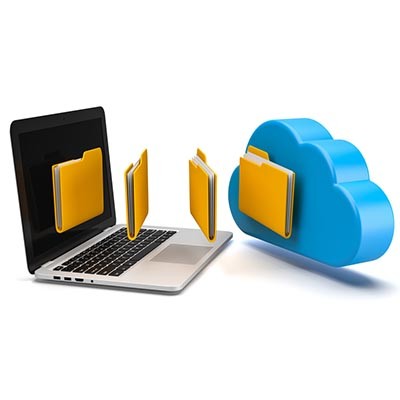Microsoft has a well-developed reputation for creating software that enables users to achieve their work objectives, especially in the business setting. Here, we’re diving into a few capabilities of one such software title, OneDrive, to review some of the features that a user might want to take advantage of.
Washington Works Blog
Cloud services have proven to be extraordinarily useful for businesses of all types. With an immense amount of options to choose from, businesses can get anything from AI to Windows in the cloud. With so many services available, sometimes businesses will pay for computing resources that they don’t use, cutting into their available operational capital. Today, we take a look at how businesses throw capital away by not keeping a close eye on their cloud-based resources.
When you look at the cloud service business model, it can be easy to wonder how it is so beneficial to businesses - or really, how it fiscally can be. After all, dollars to donuts, the monthly service charges most likely add up to less than a business would spend for another, comparable service. To understand how the cloud does this, it may help to look at something that often occurs in the office.
Cloud-based databases are valuable for businesses on plenty of levels, but when you consider how much risk you expose your organization to by using a public cloud over a private solution, you suddenly start to realize that the ramifications could be far beyond repair. Compared to the public cloud, a private solution presents a greater opportunity for security, flexibility, and customization.
If your business is looking to use technology beneficially, the ability to store data is going to be a major consideration you are going to have to confront. After all, not having enough storage space, or having too much, can be major problems for most businesses. Today, we’ll ask some of the most pressing questions you’ll need to answer to get the right (and the right amount of) storage space for your needs.
The cloud is the perfect outlet for businesses to improve productivity, but the degree to which this statement is true depends on the business and how much it leverages the cloud. If you’re not sure if your business can be utilizing the cloud in a more efficient way, perhaps we can help you make this determination and improve the way you take advantage of this technology.
These days, many businesses turn to hosted solutions to take advantage of services that they haven’t been able to use in the past. Whether it’s because they don’t have the staff to properly look after the services or they don’t have the in-house infrastructure for it, organizations continue to take advantage of hosted solutions to varying degrees. We’ll walk you through your options for whether you should build, rent, or buy your hosted solutions to best fit your business’ needs.
The cloud is such an important part of today’s business environment that most organizations use it to some extent, even if it’s just for basic storage needs. However, the cloud needs to be properly maintained, starting with the way you secure your cloud services. Take a moment to ask yourself if your cloud--whether it’s hosted on-site or by a provider--is safe and secure.
The cloud helps many organizations expand their territories beyond simply the physical workplace. Employees can now access data and applications on any connected device. Your office can benefit considerably from cloud-based resources, with email in particular being a standout solution for the cloud.
The traditional computing structure has been under siege by cloud computing for the past several years. More businesses than ever are seeing the value in cloud-hosted applications and infrastructure, and while that may not be a huge surprise, the perceptions that the cloud can solve any of your organizational computing problems depend largely on the needs of that endeavor. Today, we will take a look at successful small business cloud strategies and tell you why they find success.
One of the inevitabilities of working with the cloud is that you have to face a tough question; what kind of compliance requirements are there for cloud-based data? If you’re storing data for your business in a cloud-based environment, it becomes your responsibility to know where and how this data is stored--particularly if you’re not the one doing the actual cloud hosting. How do you maintain compliance when you seemingly have so little control over how your computing platform is managed and maintained?
Many business transactions may be moving away from the telephone, but it is still a must-have for any business. Not everyone is Internet-savvy after all. Nowadays, there are plenty of telephone options out there, but only one carries no upfront hardware costs or a exorbitant fee structure: Hosted VoIP. Today, we will take a look at the benefits of cloud hosted VoIP, and how to get one working for your business today.
The cloud has revolutionized the way that businesses approach computing. Companies can implement solutions in a flexible and accessible model that makes it much easier to take advantage of technology solutions. Yet, you should know that not all clouds are the same, and you can’t treat them as such. Here are four questions that you need to ask your cloud provider about the services that you’ve been rendered.
Data management is exceptionally important for any business, and companies that use the cloud in any sort of capacity need to be considerably more cautious in the way that it’s managed than a business that only hosts data on an internal server or network. The cloud makes things more complicated at times, but if managed correctly, it can lead to unprecedented efficiency for your organization.
Regardless of where it is kept, your data’s security is of paramount importance. However, this doesn’t mean that the decision between leveraging the cloud or an on-premise server for your data storage needs isn’t an important one. For this week’s tip, we’ll weigh these options against each other to help you establish which is the better option for your business’ needs.
Smart organizations are always looking for ways to improve how they do business. Digital transformation is a way for businesses to get the most out of their technology by improving workflows and overall efficiency. What does digital transformation look like and how can you implement it in your business?




















